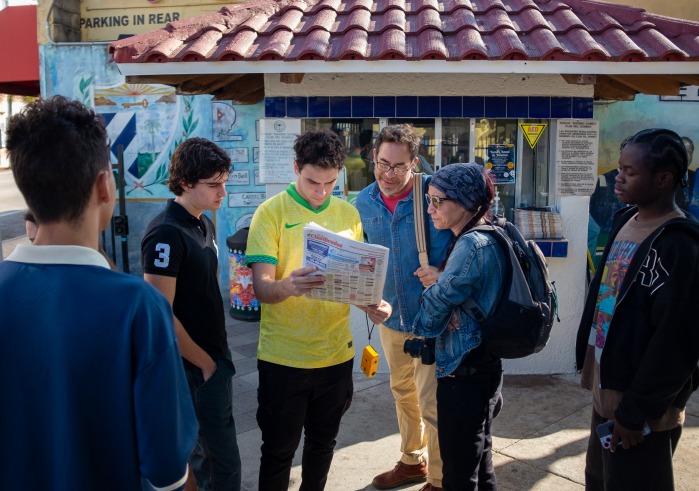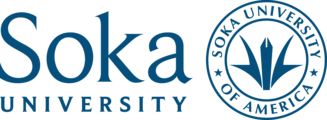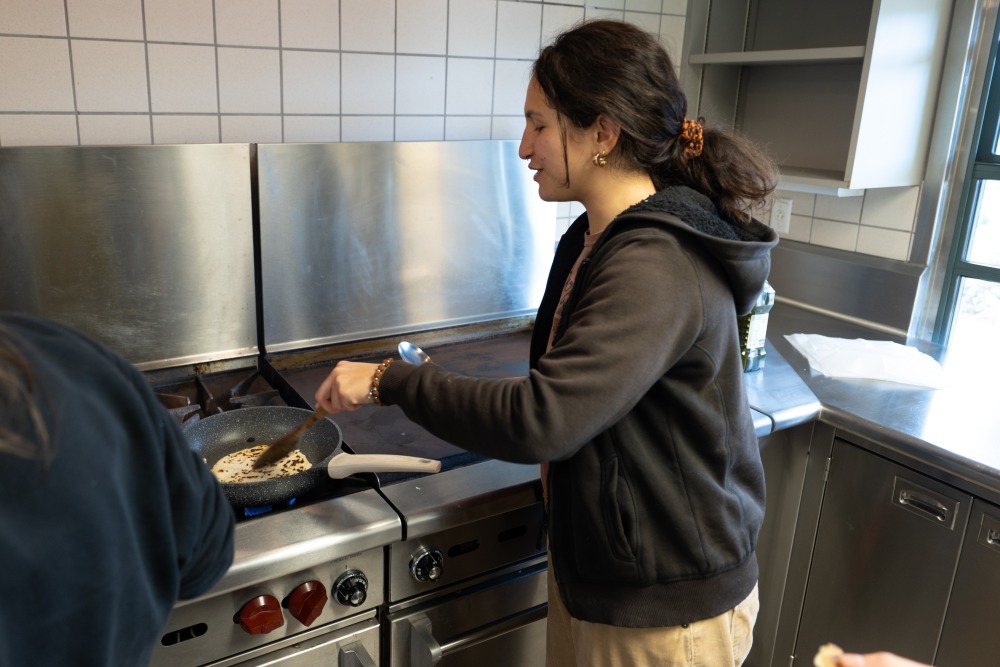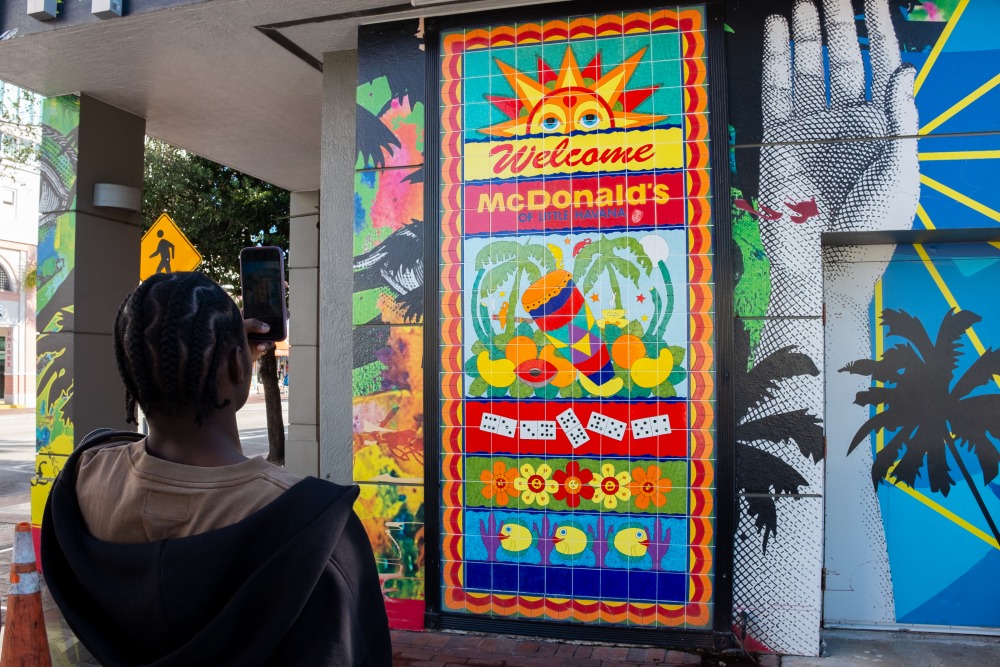Through Miami Streets and Indigenous Foods: A Closer Look at Two Learning Clusters

What if what you learned at college went far beyond the classroom: to the vibrant immigrant neighborhoods of Miami, Los Angeles’ last remaining wetland, or Ethiopian restaurants where Indigenous foodways nourish each plate? Learning Clusters, one of the signature features of education at Soka University of America, make experiential learning opportunities like these possible.
Every January during Winter Block, these intensive 3.5-week courses closely examine real-world issues firsthand. Learning Clusters offer small groups of roughly 12 students an in-depth, immersive learning experience, often including field trips and regional or international travel.
This year, students could choose from 23 Learning Clusters, each designed to foster critical thinking, imaginative empathy, and problem-solving skills through tackling real-world issues. Elena Cardona, visiting assistant professor of Spanish language and culture, thinks Learning Clusters are a uniquely impactful and valuable way for students to learn. The intensive focus on a single topic within a tight-knit group, she said, allows the class “to create a space of trust and support, to share ideas, and to explore things that do not easily arise in a regular, semester-length course that covers more topics in a broader way.”
Cardona taught a Learning Cluster called “Latin American Diaspora and Human Rights in Miami,” which focused on migration from Cuba, Haiti, and Venezuela and how these immigrant communities have contributed to the social and political landscape of Miami through art and culture. The class spent 10 days in Miami, where students engaged in street photography and reflective writing. The course culminated in final photobooks and multimedia projects about the Latine community’s cultural resilience and struggle for human rights.
Chika Esiobu, visiting assistant professor of African studies, views Learning Clusters as key to how Soka provides an education that goes beyond earning a degree. “I think it’s a great way to see education from a broader perspective,” she said, “of knowledge for the sake of knowing and for the sake of transforming society.”
Esiobu’s Learning Cluster, “Indigenous Food Systems, Public and Environmental Health, and Social Entrepreneurship,” focused on how Indigenous food systems, which rely on native plants and animals that have traditionally been part of the cuisine of a given region, can promote public health and environmental sustainability.
In many societies around the world, colonialism has damaged Indigenous food systems and created a reliance on imported foods, harming the health and food security of the local population while contributing to greenhouse gas emissions. Her Learning Cluster also covered the core principles behind starting and managing a sustainable business centered on Indigenous foods, and at the end of the course, students collaborated on business proposals.
Learning Clusters are a popular and enriching experience for SUA students. The courses offer unparalleled access to faculty experts in the field. For example, Mareva Dijoux ’26, who had previously studied Indigenous knowledge with Professor Esiobu, eagerly joined her Learning Cluster to further explore the topic.
“By joining this course, I was able to dive deeper into sustainable food systems and how they intersect with ecological justice and Indigenous sovereignty,” said Dijoux, who is from Brive-la-Gaillarde, France. “I hope to keep building on this knowledge to become a good Earth steward and support Indigenous communities.”
Other students enjoy the opportunity to develop a practical skill set while diving into a subject that might be new to them. “I wanted to experience hands-on media practice while at the same time learning more about a different background or culture than mine,” said Aya Elgamal ’27 about her choice to take Cardona’s Learning Cluster on Latin American migration. Originally from Cairo, Egypt, Elgamal especially appreciated learning about the Cuban diaspora in Miami.
Revitalizing Food Systems, Reimagining Entrepreneurship
Experiential learning is a hallmark of Learning Clusters. In Esiobu’s course, hands-on activities included raising an agricultural plant from seed, cooking Indigenous foods as a class, and foraging for plants around campus. The latter activity took place in teams, and students presented their findings to the whole group.
Dijoux found foraging to be an especially rich educational exercise. “I think it is powerful to recognize plants and know the many benefits they bring if used properly,” she said. “Foraging is also a good opportunity to connect with our environment and learn in community.” In addition to supporting these key concepts, the foraging activity was intended to help students shift the way they see food systems.
“We want to reinforce the idea that you don’t have to have money to eat,” Esiobu said. “Food is all around us. We want to get back to seeing food as what nature provides, not something that, in order for us to have it, someone has to make money off of us.”
Students in the Learning Cluster explored the Indigenous food systems of several cultures around the world, including Cambodia, Ethiopia, and the Acjachemen Nation (the original inhabitants and stewards of vast territories of Southern California). They took field trips to the Huntington Botanical Gardens in San Marino, the Orange County Great Park Food + Farm Lab in Irvine, Sophy’s Cambodia Town Food & Music in Long Beach, and Tana Ethiopian Restaurant & Market in Anaheim.
Before visiting Sophy’s Cambodia Town and Tana Ethiopian Restaurant, the class learned about each culture’s food systems, traditional cuisine, and etiquette around food. They examined, for example, how Cambodia’s cuisine is actually a rich mixture of different cultures and ethnicities. While studying Ethiopian food, the class focused on the fact that Ethiopia was not colonized and how this has allowed its food system to remain deeply connected to its Indigenous roots.
At Sophy’s and Tana, in addition to trying delicious traditional dishes, students had a chance to talk with each business owner about the food traditions in their culture and the challenges of running a sustainable, ethical business centered on Indigenous foods. Students later applied these insights to their own business proposals, which they designed in small groups and presented at the end of the course.
Esiobu hopes that students leave her Learning Cluster with a new perspective on entrepreneurship as “something that has to be done for the sake of society and for uplifting people.” This fundamental paradigm shift, she said, is the basis for all the other practical business skills students acquire in the course, such as how to prepare a proposal and present it to a grant-making organization. The course also stressed that entrepreneurs don’t need a lot of financial capital to start a business. Instead, utilizing online tools like Substack to develop social capital and build trust with an audience over time, Esiobu said, is much more valuable, especially when it comes to socially minded entrepreneurship.
“All you need is your passion,” she said. “Put who you are and your convictions out there.”
Exploring Miami Through Photography and Latin American Culture
For Cardona, giving students a chance to engage in street photography was essential to the type of critical thinking she aimed to foster in her Learning Cluster. “Photography allows you to develop awareness about your surroundings,” she said. “It gives you the opportunity to see things twice, in a way that allows you to reflect on your perspective. What is building your way of seeing the world? Which aspects of your surroundings are reflected or represented in your pictures?”
Before departing for Miami, the class spent a week reading and discussing theoretical frameworks about the ethics of street photography. They also studied the history of the human rights abuses that led to waves of Latin American migration to Miami over the past century. While in Miami, they visited art museums showcasing the work of Cuban, Haitian, and Venezuelan artists as well as museums where they learned more about the history and context of the cultures they were studying.
Luca Aiello ’27, from Winnipeg, Canada, said the American Museum of the Cuban Diaspora left a lasting impression. “Hearing firsthand accounts from a Cuban tour guide who was displaced during that era brought the exhibits to life in a way that no textbook or static display could achieve,” he said. “It allowed for a profound understanding of the historical, cultural, and emotional weight of displacement, as well as the enduring hope and strength of the Cuban community.”
Students also volunteered with the Florida Immigrant Coalition to learn more about contemporary human rights issues faced by migrants and asylum seekers. This gave students the opportunity to learn how such organizations are educating immigrants about their rights and helping them navigate the path to citizenship within a difficult political landscape. Morgana Donatti ’27, who is from São Leopoldo, Brazil, said that her experience in Cardona’s Learning Cluster has confirmed her desire to work in a field related to migration and immigrant rights.
Perhaps the most fundamental hands-on experience during the trip, however, was the practice of taking photo walks in neighborhoods like Little Havana, Little Haiti, and the Miami Design District. Often led by local photographers with deep knowledge of the community, these photo walks enabled students to immerse themselves in each neighborhood and take photos of whatever captivated them.
“We were not only able to step into the role of a photojournalist,” said Jin Coggins ’27, “but since Miami consists of very tight-knit communities, we would interact with locals and enjoy brief yet insightful engagements with them.” Coggins, who is from New York City, was already interested in street photography and had taken a Learning Cluster on a similar topic with Cardona last year. He appreciated the opportunity to continue learning how he could use his “personal practice of photography to contribute to positive social change.”
Along with learning about the Latin American diaspora in Miami, Cardona’s course also aims to teach the basics of photography and storytelling. This includes concepts around framing and perspective, as well as how a sequence of photos can build a narrative. The most fundamental concept she hopes students take away from the course, however, is how photography can bridge theory and reality, giving students a specific means to reflect on migration on a human level. “We are humans because we are in movement,” Cardona said. “Migration is a phenomenon that is defining the present and future of humanity.”
A cornerstone of the curriculum at SUA, Learning Clusters shape students’ educational journeys by giving them a crucial space to explore a real-world problem alongside their peers. Learning Clusters have inspired senior capstone projects and helped students decide on their academic concentration. For many, they are among the most memorable learning experiences of their undergraduate career.
By immersing students in the complex, multifaceted challenges of the world outside the classroom — whether through street photography, food justice, or social entrepreneurship — Learning Clusters instill the creative resourcefulness and problem-solving skills they’ll need to drive change in their future careers and local communities.


